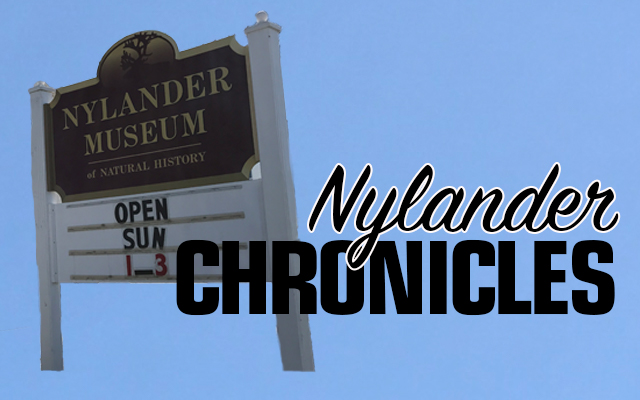Three of Aroostook County’s orchid species are currently listed by the Maine Natural Areas Program as “endangered,” defined as “rare and in danger of being lost from the state in the foreseeable future.” These are the Giant Rattlesnake Plantain (Goodyera oblongifolia), the White Adder’s Mouth (Malazis monophyllos), and the Prairie White-Fringed orchid (Platanthera Leucophaea).
The first of these I have seen three times, twice in the early 1990s and once last spring. This plant is easy to recognize because of the prominent white stripe running down the middle of the basal leaves. Only once did I see Goodyera oblongifolia in bloom, and then only one plant; on the other occasions all I observed were the stemless basal leaves, flush to the ground.
One summer about 25 years ago I discovered one of these leaf clusters and went back the next year to check the site. All I found was a hole in the ground. Something had dug it up! Nothing more until 2017. Then, at a different place, I found a similar small hole and, beside it, still rooted, the half-eaten remains of another Giant Rattlesnake Plantain.
The tiny but gorgeous magenta, white and yellow calypso orchid (Calyeso bulbosa), though not listed as threatened, could certainly in my experience be described as vanishing. In 1992, I counted 183 of them blossoming on my land in Perham. But between 1995 and 2000, something dramatic happened: At the turn of the millenium only five were blossoming there, and by 2010 there were none at all, though a solitary bloom has shown up a couple of years since.
To some extent, local conditions had something to do with it. Clearcutting that took place just before I bought the land in 1987 brought more sunlight to the edges of the remaining forest, and the calypso took advantage of this. Soon, however, young fir and cedar crowded them out.
Also, beavers made dams along the brook, flooding some of the remaining good habitat. This wasn’t the whole story, however, for in Woodland I observed a similar decline. In 1995 there were 22 blossoming calypsos, but in 2000, only three. In 2010 there was just one, and since 2015, none at all.
Richard Clark is a longtime member of the Nylander Board of Trustees and an active member of Friends of the Nylander. He conducts tours of the facility; check the Nylander Facebook page for details.








